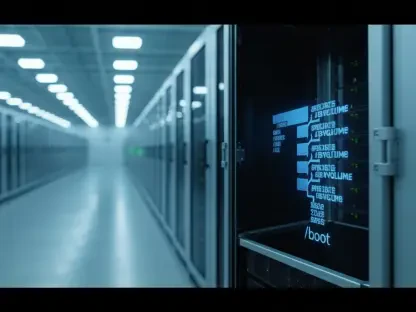In the dynamic realm of software design, especially in legacy systems within regulated industries like insurance and SaaS, Vijay Raina stands as a beacon of expertise. With a deep-rooted understanding of enterprise SaaS technology and architectural design, he navigates through complex systems, transforming challenges into opportunities. In this interview, Vijay shares his insights on the application of domain-driven design to overcome the hurdles of legacy systems, the role of system analysis, and the broader applicability of domain-centric Agile approaches across various industries.
What challenges are typically faced when applying modern Agile modeling to legacy insurance systems?
Legacy insurance systems often present a daunting landscape for modern Agile modeling. These systems have decades of embedded complexity, with business logic intertwined with regulatory requirements instead of a coherent architectural design. Agile’s focus on iteration and flexibility can become muddled when faced with antiquated scripts, multi-state compliance tables, and densely packed legacy code that resist surface-level changes. Consequently, developers can easily find themselves off track, frustrated by the discrepancies between Agile’s intended flexibility and the rigid realities of the systems they deal with.
How does a domain-first perspective help in managing complex legacy insurance systems?
A domain-first perspective reorients the focus towards the business processes and realities, rather than just the interfaces and endpoints. This approach captures the essence of how a business genuinely operates, allowing for a more accurate replication within a modern system. By understanding and modeling from the core business logic, actions like policy renewals or claim processes are accurately represented, which facilitates building functionality that is testable and maintainable despite regulatory complexities. This perspective becomes crucial in intensely regulated environments where compliance is deeply tied to business logic.
In what way is focusing on the interface level inadequate for legacy systems?
Legacy systems don’t operate primarily at the interface level; they function largely at the process level, where the true units of business logic exist. Actions such as policy renewals, claim escalations, or underwriting overrides unfold beyond what a user interface might suggest. When teams focus solely on frontend behavior and interface-level modeling, they miss out on the intricate backend processes that drive these operations. It results in implementation hurdles where hidden dependencies and pricing logic in legacy scripts present unexpected challenges, highlighting the inadequacy of an interface-first approach.
Can you explain the importance of understanding business processes like policy renewal in insurance systems?
Understanding business processes like policy renewal is pivotal in insurance systems because they encapsulate the core actions and decisions critical to business functionality. These processes dictate how and when actions are initiated, the data involved, and the decisions required for completion. Without a deep understanding of these workflows, the software delivered might not hold any real value, missing the nuanced steps and compliance checks integral to successful and accurate operations. Detailed knowledge of these processes ensures alignment with business requirements, facilitating regulatory adherence and preventing costly errors.
Why was system analysis deemed a necessary step before coding began in the insurance project mentioned?
System analysis was essential before coding because it provided a comprehensive map of how processes like renewals operate within the organization. This upfront effort enabled the identification of inconsistencies and knowledge gaps across teams, offering crucial insights into who triggers processes, the relevant data, and where decisions are made. Without such analysis, coding based on incomplete or incorrect assumptions could result in inadequate solutions, failing to meet the needs of the complex, regulated environment in which insurance companies operate.
How did system analysis help identify inconsistencies and knowledge gaps within existing systems?
System analysis served as a vital diagnostic tool, revealing discrepancies in the existing system workflows and spotlighting areas where team knowledge was lacking. It highlighted variances in how processes were supposed to occur versus their actual implementations, unearthing dependencies and outdated assumptions hidden within the legacy code. This clarity not only informed the development of more accurate and maintainable software but also bridged knowledge gaps, ensuring all teams had a uniform understanding of the system landscape.
What is the significance of designing software grounded in business reality rather than just interface design?
Designing software rooted in business reality ensures that the solutions developed address the actual needs and behaviors of an organization. Rather than being confined to appearances or superficial interactions, this approach dives deeper into the core operations, mapping how information flows, where business rules are applied, and what changes are necessary for modernization to succeed. Such grounded design goes beyond interface aesthetics, fostering architectural integrity and enhancing functionality that genuinely benefits the business.
How did focusing on business events instead of features benefit the architectural design process?
By centering on business events rather than features, the architectural design process became more aligned with the operational realities of the organization. This approach facilitated a common language across all teams, from product to QA to developers, making planning sessions more coherent and requirement discussions clearer during sprints. Prioritizing events like premium recalculations or compliance flagging over isolated features ensured that the architecture reflected the organization’s workflow, ultimately reducing misunderstandings and project churn.
In what ways did the domain-centric approach enhance the Agile practices employed by the team?
The domain-centric approach fundamentally redefined the Agile practices by anchoring them in the business scenarios rather than derived features. This realigned Agile methodology with the organizational objectives, enabling more meaningful user stories, focused testing, and shorter feedback loops. Such grounding ensured Agile practices did not merely function as procedural rituals but became a mechanism for effective and efficient software delivery that resonated with the business’s core operations.
How does aligning Agile practices with business scenarios improve software delivery?
Aligning Agile with business scenarios enhances software delivery by establishing clear, objective acceptance criteria and focused testing based on actual business needs. It streamlines the development process through tighter feedback loops and ensures that the delivered software accurately reflects the organization’s workflow. This alignment transforms Agile from a flexible framework into a powerful tool for capturing and meeting real-world business requirements, leading to more stable backlogs and increased delivery velocity.
Why is the domain-centric Agile approach also applicable in environments beyond insurance, such as Retail and SaaS?
The domain-centric Agile approach extends beyond insurance because it addresses the universal challenge of aligning software development with complicated requirements regardless of industry. In environments like retail and SaaS, where diverse factors like regional rules and compliance models impact operations, a domain-centered perspective helps stabilize backlogs and improve delivery speed by grounding modeling in real-world behavior. This approach addresses the nuances of these industries, offering clarity and consistency that traditional feature-first Agile frameworks often fail to deliver.
Can you provide an example of how domain-centric modeling improved delivery velocity in a non-insurance project?
In a retail environment managing complex pricing systems across brands, domain-centric modeling proved transformative. By focusing on the core rules and business logic—such as seasonality and regional variations—rather than attempting to capture everything feature-first, the team achieved a more stable backlog. This method reduced the need for repetitive rewrites of misunderstood features, allowing for greater consistency and adaptability in response to business changes, thereby improving delivery velocity and coherence.
How do ambiguous domain behaviors pose challenges for SaaS companies in regulated markets?
Ambiguous domain behaviors are problematic for SaaS companies in regulated markets because they obscure how software is used within real-world compliance workflows. This opacity makes it difficult to align the software with regulatory requirements, risking misalignment with business goals or compliance standards. Properly modeled domain behaviors clarify these complexities, ensuring software development and deployment are consistent with both compliance needs and business objectives.
What role does real-world compliance play in developing software for regulated environments?
In regulated environments, real-world compliance shapes every facet of software development. It requires developers to understand and integrate intricate legal and operational mandates within their systems, ensuring that every piece of functionality adheres not just to performance metrics but to strict regulatory standards. This ensures the software can operate effectively within the bounds of regulation, minimizing risks and optimizing alignment with industry-specific standards.
Can you summarize how domain modeling contributes to making Agile effective in complex industries?
Domain modeling elevates Agile’s effectiveness by anchoring the methodology in real-world operations rather than abstract features. It provides the critical context necessary for understanding and addressing the complexities inherent in industries like insurance, retail, and SaaS, where operational logic and compliance are entwined. This clarity transforms Agile from a basic framework to a powerful delivery engine that captures and responds to genuine business needs, ensuring successful outcomes in even the most complex environments.
Do you have any advice for our readers?
Embrace the complexity of your business environment rather than shying away from it. Focus on understanding the domain in depth to tailor Agile practices that genuinely reflect these realities. Ensure every process, from system analysis to design, is rooted in business truth, allowing Agile to be not just an iterative process but a strategic asset.









